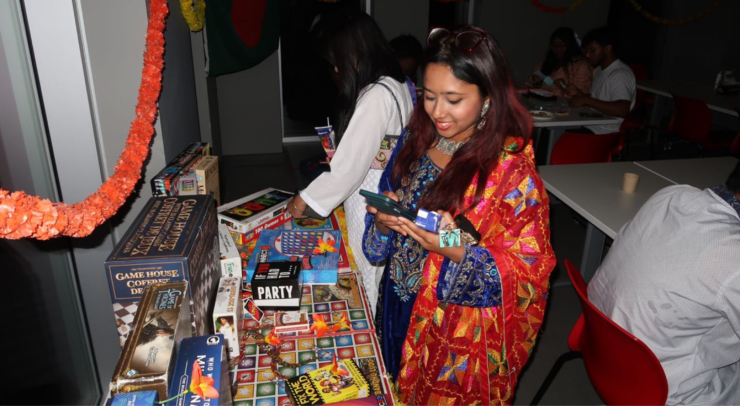Here’s a rundown of the world’s brightest holiday
Diwali (also called Deepavali) is a holiday that is celebrated by over one billion Hindu, Buddhist, Sikh, and Jain people around the world. It is an official holiday in India, Nepal, Pakistan, Sri Lanka, Fiji, Guyana, Mauritius, Myanmar, Singapore, Malaysia, Suriname, and Trinidad and Tobago. Diwali is also a major holiday in countries with significant South Asian and Hindu populations, such as in Canada, the United States, and the United Kingdom.
Each religion and culture that celebrates Diwali uses it to commemorate different events, however, it always symbolizes “the triumph of light over darkness,” and good over evil.
In Hinduism, Diwali marks Lord Rama’s return to Ayodhya after fourteen years, and his victory over the demon king Ravana. After Ravana kidnapped Ram’s wife, Sita, and brought her to Lanka, Ram journeyed across India to rescue Sita, resulting in an epic battle that ended with Ram killing Ravana and effectively ending the demon’s rule over Earth (this battle is commemorated during another holiday, Dussehra). Ram and Sita travelled home to Ayodhya on a moonless night, where their community welcomed them home by lighting clay oil lamps called diyas. The celebration of this event is called Diwali — a derivation of the Sanskrit word deepavali, meaning “row of lighted lamps.” It is also sometimes referred to as the Festival of Lights.
Diwali lasts five days, with specific celebrations for each day. The first day, Dhanteras, celebrates the Goddess Lakshmi’s and God Dhanvantari’s emergence from the ocean of milk. On this day, people clean and decorate their homes. It is considered an auspicious day, and many people purchase gold and silver.
The second day, Chhoti Diwali (meaning ‘little Diwali’), is an important time for making or purchasing mithai (sweets) and festive foods.
The third day, Lakshmi Puja, is when prayers are offered to the Goddess Lakshmi, who is welcomed into the home to bring prosperity and good fortune. It is the main day of the festival, and is celebrated with delicious meals, sweets, gifts, decorations, and traditional clothing.
Bali Pratipada, the fourth day, celebrates Vishnu’s defeat of Bali and a game of dice between husband and wife, Parvati and Shiva. The day is important for married couples, and usually includes gifts and feasts.
The fifth and final day is Bhai Dooj (meaning ‘brother’s day’). It’s when sisters give their brothers blessings, food, and gifts to acknowledge their brother’s duty to protect them. Brothers often offer gifts to their sisters as well.
The festival of light is known for being a time of bright and colourful celebrations. Many families decorate their homes with rangoli, an art form that uses coloured rice, sand, and flowers to create intricate patterns, such as mandalas, faces of deities, flowers, and animals. Rangoli isn’t just for decorative purposes — it’s also one of the ways that people celebrating Diwali welcome the Gods or Goddesses into their homes.
During the evenings and nights of Diwali, families light diyas, hang lights and lanterns, light sparklers, and even use fireworks. These great displays of light commemorate Lord Ram’s return to Ayodhya, and brighten one of the darkest nights of the year, symbolizing the triumph of good over evil.
A major aspect of Diwali is the food. The specific dishes differ according to culture and religion, but they are usually vegetarian. Snacks and foods are typically made from chickpeas (channa), lentils (dhal), spinach (bhaji), pumpkin (kaddoo), and potatoes (alloo), such as samosas, roti, various curries, and mango achar, to name a few.
The mithai include laddu (a sweetened ball), halwa, barfi (a variation on fudge), gulab jamun (fried dough balls), and kheer (rice pudding). They are usually made with condensed milk, nuts, cardamom, and saffron.
This year, Diwali will last from Oct. 22 to Oct. 26, with the main day of celebration, or Lakshmi Puja, taking place on Oct. 24.
Happy Diwali! (Shubh Diwali!)





